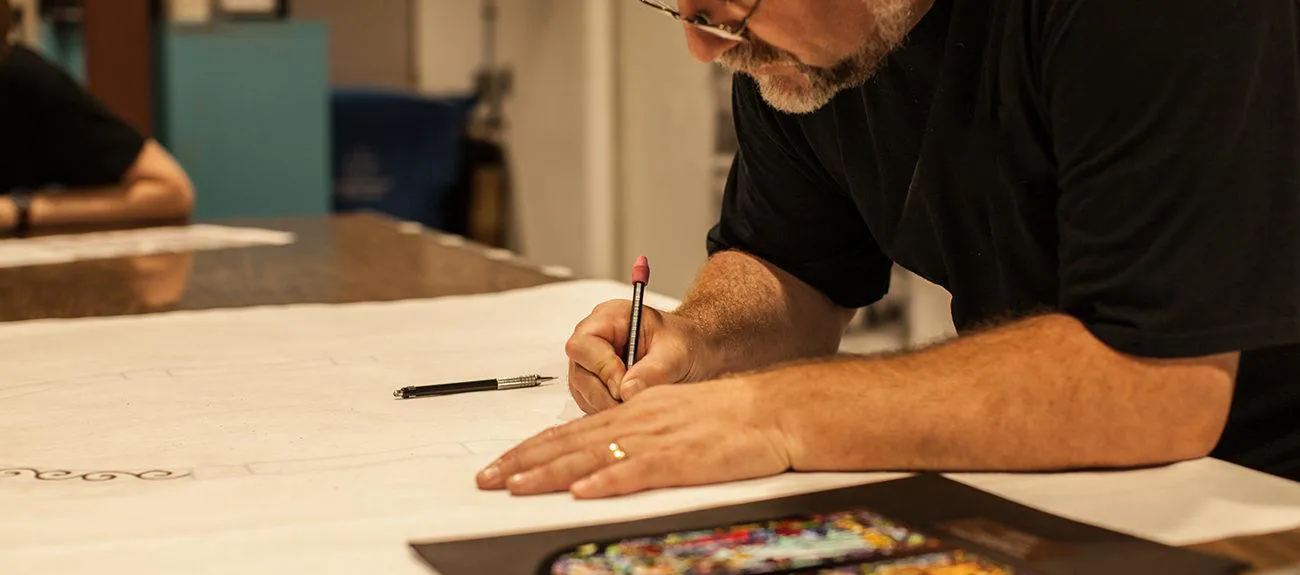
What Every Church Leader Should Know About Hiring a Cathedral Glass Company
Stained glass windows are more than decorative features in churches; they are vivid storytellers, connecting worshippers to centuries of faith, artistry, and history. For generations, these windows have inspired awe, cast ethereal light across sacred spaces, and immortalized profound narratives. When the time comes to create or restore these integral elements, the responsibility of choosing a reputable cathedral glass company is monumental. Church leaders must seek artisans who not only understand the craft but also respect the spiritual and historical significance that each piece of glass holds.
This guide will walk you through everything you need to know about hiring a cathedral glass company – from understanding its rich history to ensuring you ask the right questions before making a decision. With insight into costs and specific recommendations, including the expertise of Willet Stained Glass Studios, we’ll empower you to make a choice that honors both tradition and craftsmanship.
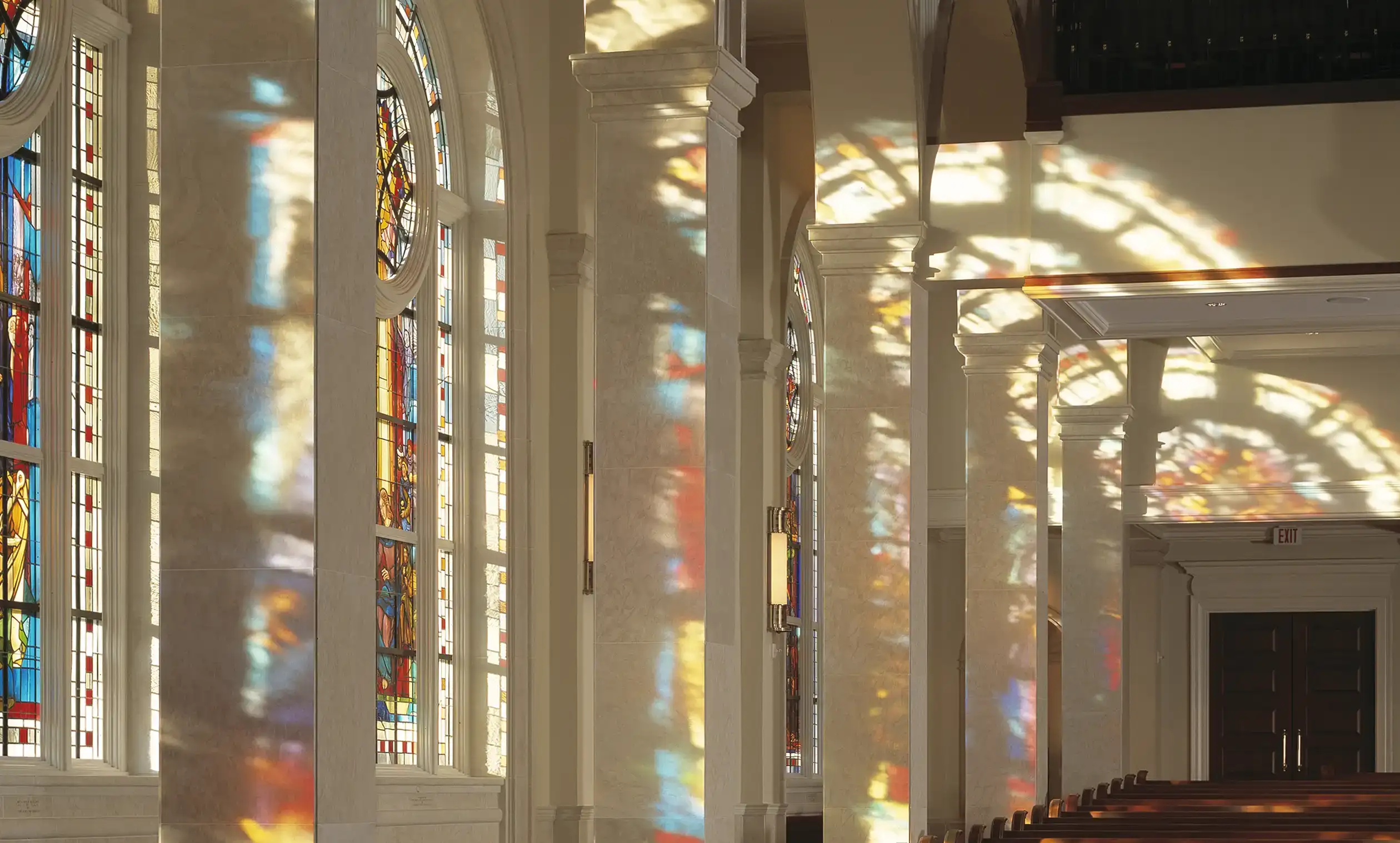
1
The Rich History of Stained Glass in Cathedrals
The origins of stained glass in cathedrals trace back to the Middle Ages, emerging as a unique artistic blend of craftsmanship and spiritual devotion. This art form was not merely decorative but served as an essential narrative tool for largely illiterate congregations. Within the soaring walls of Gothic cathedrals, intricate glass compositions illuminated biblical stories, scenes of saints, and divine symbolism. The interplay between light, color, and faith transformed these windows into celestial storytellers, offering worshippers a profound and immersive spiritual encounter.
The earliest examples of stained glass, such as those gracing the grand cathedrals of Chartres and Canterbury, reveal the remarkable craftsmanship of medieval artisans who utilized limited tools but boundless creativity. These windows were painstakingly created through techniques such as cutting pieces of hand-colored glass, leading them together with delicate metal frames, and firing them to ensure vibrancy and durability. Symbols, scripture, and historical events came to life through intricate designs, providing a way for communities to visually engage with the divine.
Over time, new innovations elevated this art to greater heights. Silver staining, introduced in the 14th century, allowed for golden hues to shimmer across the glass, adding depth and warmth to compositions. Later, the method of enameling expanded the detail and color palette of stained glass, enabling more subtle and lifelike visual depictions. These innovations highlight the continuous evolution of the craft, driven by both creative mastery and religious reverence.
By commissioning these luminous works, communities made a significant investment in their faith and heritage. Cathedrals did not simply serve as places of worship but stood as visual declarations of devotion. Stained glass, with its ethereal illumination and didactic storytelling, became the heart of these spaces – a sacred medium connecting heaven and earth. For centuries, they have offered solace, inspiration, and an unparalleled sensory experience to worshippers, pilgrims, and visitors alike.
Today, many of these windows are fragile artifacts, bearing the scars of time, war, and environmental decay. Restoring or creating new stained glass masterpieces demands not only technical expertise but also a deep respect for their historical and spiritual significance. The craft remains a testament to human ingenuity and faith, requiring skilled artisans to preserve the integrity of these treasures for future generations. Understanding this rich history is vital when choosing a cathedral glass company, ensuring a harmonious blend of tradition, artistry, and modern innovation.
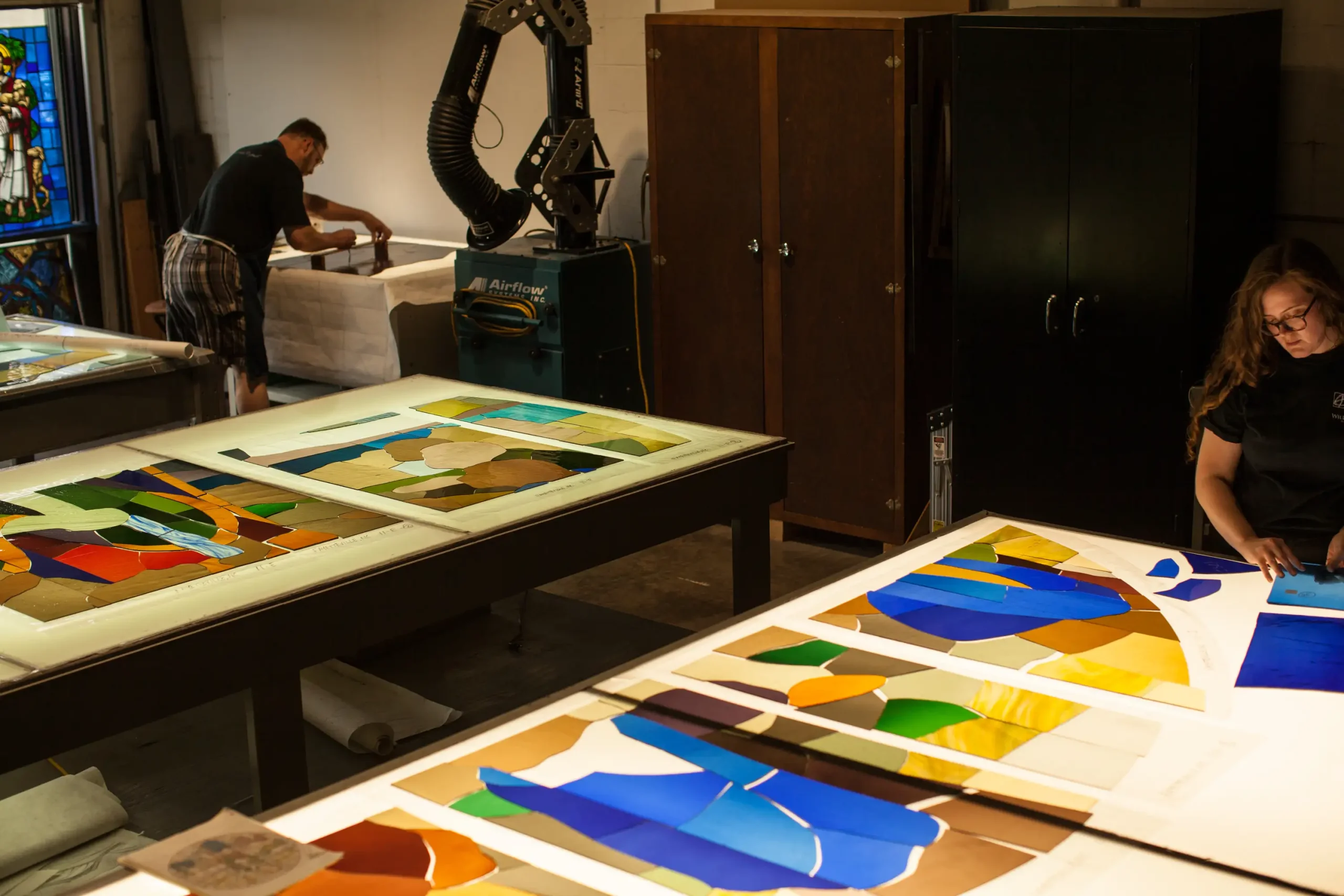
2
Qualities to Look for in a Cathedral Glass Company
Selecting the right cathedral glass company is a decision that will shape not only the physical beauty of your sacred space but also its spiritual resonance for generations to come. Additionally, it ensures the legacy of historical craftsmanship is preserved while allowing the artistry to evolve. Hiring a reputable cathedral glass company requires the consideration of several key qualities, each of which speaks to their commitment to excellence, artistry, and historical respect. Below is a comprehensive guide to the traits and factors you should prioritize when choosing a partner for your project.
1. Heritage Mastery and Historical Preservation
A cathedral glass company must demonstrate an in-depth understanding of the heritage and craftsmanship of stained glass. Beyond creating stunning new installations, they should possess the expertise needed to evaluate and conserve historic windows to protect their integrity. This includes an intimate familiarity with traditional methods such as hand-cutting glass, lead cames, and silver staining, paired with the ability to incorporate modern advancements when appropriate. Companies that excel in historical preservation often have a legacy themselves, with decades – if not centuries – of hands-on experience creating and restoring cathedral glass.
When restoring stained glass, the use of period-accurate materials and techniques is critical. A skilled cathedral glass company – such as Willet Stained Glass Studios – should exhibit the ability to seamlessly repair or recreate designs while ensuring their work respects the original artist’s vision, religious context, and architectural surroundings. A deep respect for the sacred nature of these artifacts distinguishes a masterful cathedral glass company from an inexperienced one.
2. Customization and Collaboration
Every church is unique, carrying its own sense of spiritual identity, history, and architectural character. An outstanding stained glass studio is one that emphasizes collaboration – working closely with church leaders, communities, and architects to bring a unified vision to life. From initial consultations to final installation, their process should emphasize listening to your congregation’s needs and faithfully tailoring designs to your church’s specific liturgical themes and aesthetic style.
This level of tailored craftsmanship should extend beyond the visuals to incorporate theological depth. For instance, stained glass narratives could highlight a patron saint, showcase scriptures that resonate with the congregation, or reflect cultural and historical elements specific to your church. By prioritizing collaboration, a great cathedral glass company bridges the technical and spiritual, crafting an end product that complements your sacred space while enriching its ambiance.
3. Skilled Artisans with Specialized Expertise
Cathedral glass is among the most intricate and demanding of art forms, requiring hands honed in precision and hearts devoted to artistry. Willet Stained Glass Studios employs a team of highly skilled artisans, each with expertise across varying facets of the craft. Whether it is glass painting, firing, lead bending, grouting, or structural engineering for restoration, every process reflects our flawless execution and respect for the medium.
Our artisans also have training in both traditional and contemporary methods, as this balance ensures our work remains rooted in historical techniques while incorporating modern innovations for better longevity and resilience. Beyond technical skill, our artistry shines in our ability to bring stories to life, weaving light and color into windows that inspire awe.
4. Portfolio, Credibility, and Reputation
A cathedral glass company’s portfolio is more than a showcase of its artistic ability – it is a testament to its versatility, craftsmanship, and reliability. During your evaluation, carefully examine past projects they have completed for cathedrals, churches, and religious institutions. Look for complexity, richness of detail, and the ability to adapt to multiple architectural styles while still delivering work that resonates spiritually and visually.
Equally important is the cathedral glass company’s reputation. Gather testimonials from other church leaders and read case studies that describe their approach, timelines, and overall professionalism. A well-respected provider is one that demonstrates transparency, strong communication, and a clear passion for their work. Longevity in the field also speaks volumes; a studio with a history of successful projects is likely to have the experience and resources required for your needs.
5. Technical Innovation with Structural Integrity
While the craftsmanship of stained glass holds immense artistic value, it must also meet modern safety, energy, and durability standards to ensure its lasting presence in your church. The best cathedral glass companies seamlessly integrate technical knowledge into their work. From installing specialized protective glazing systems to repairing structural frameworks weakened by time, they prioritize long-term stability without compromising aesthetics.
Ask whether the cathedral glass company leverages advanced technologies such as CAD software or 3D rendering during the design phase to enhance precision and visualization. Similarly, inquire about their familiarity with techniques for weatherproofing and UV resistance – essential considerations for protecting fragile glass panels from environmental wear.
6. Commitment to Spiritual and Cultural Respect
Above all, the cathedral glass company you hire should treat the project as more than just a contract – it should be a mission. Look for artisans who understand that cathedral glass carries tremendous spiritual weight for both present and future generations. Their approach should honor the sacredness of the space, not only as a worksite but as a sanctuary infused with faith and tradition.
Cultural nuance and respect further refine their role. For churches steeped in particular traditions, ask whether the cathedral glass company has experience integrating specific cultural motifs or theological frameworks. Instead of imposing generic designs, they should enrich your church’s visual story without losing sight of its unique identity.
By carefully assessing these qualities and asking thorough questions, you ensure that the cathedral glass company you choose will not simply fulfill a task but truly contribute to the sacred mission of your church. Stained glass provides art for the soul – timeless, luminous, and deeply personal – and the right partner can help transform your vision into a masterpiece worthy of your congregation’s faith and history.
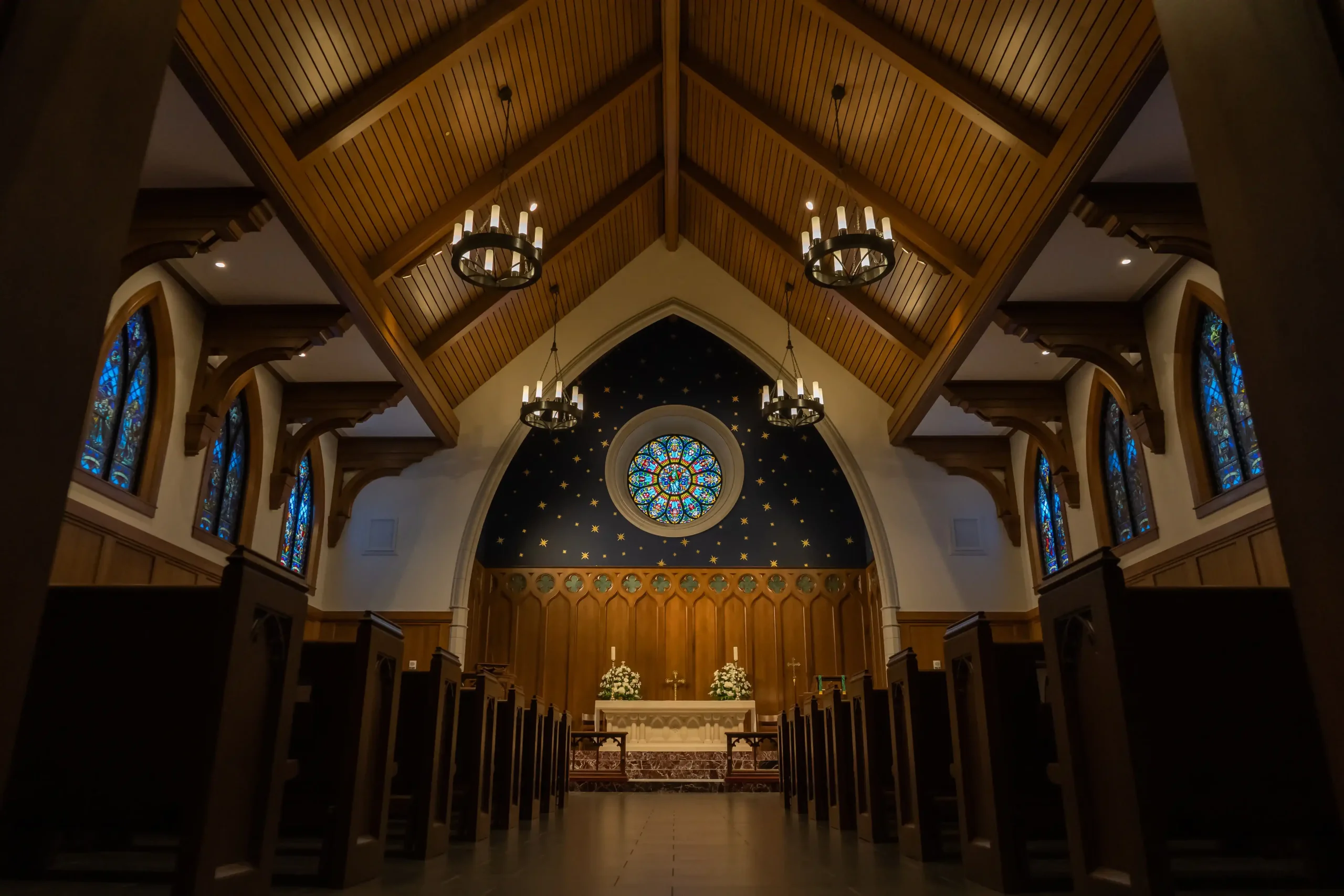
3
Questions to Ask Potential Companies
Choosing a cathedral glass company requires diligent assessment to ensure your sacred space is entrusted to artisans capable of delivering an enduring masterpiece. By asking the right questions, you not only evaluate their technical capabilities and artistry but also their dedication to understanding your church’s spiritual, cultural, and architectural narrative. Below is an expanded guide to help you gain deeper insights into their experience, methods, and commitment to excellence:
What is your experience working with churches or other sacred spaces?
Religious and sacred structures often have unique architectural intricacies and spiritual considerations. Confirm whether the cathedral glass company has extensive experience working with these spaces and ask how they tailor their process to respect the sanctity of the environment. Their ability to understand and adapt to the nuanced requirements of religious architecture is essential.
Can you provide a comprehensive portfolio of past cathedral or church projects?
Reviewing completed projects offers insight into their artistic range, craftsmanship, and versatility. Look for examples that align with your church’s aesthetic or historical character. Such a portfolio should demonstrate their capability to both create original designs and restore traditional windows with accuracy and reverence.
Do you employ authentic methods and high-quality materials?
Authenticity is key in cathedral glass artistry. Ensure the cathedral glass company uses traditional techniques, such as hand-painting and leadwork, alongside premium materials such as mouth-blown or antique glass. Ask how they balance these traditional methods with modern innovations for added durability and energy efficiency, ensuring your project stands the test of time.
What is your process for assessing the condition of existing stained-glass windows?
Restorations start with a detailed inspection and evaluation of the windows’ current state. Ask about the tools and techniques they use to diagnose issues such as cracks, fading, or structural damage. A solid cathedral glass company should provide a detailed report of their findings along with customized recommendations for both immediate repair and long-term preservation.
How do you ensure precision during the design and restoration phases?
Precision is critical in cathedral glass artistry, as even minor errors can disrupt the harmony of a design. Ask if they use advanced tools such as CAD software, 3D visualizations, or templates to refine their designs and ensure compatibility with your church’s existing structure. This technology is important for both creating new installations and replicating lost or damaged historical details.
How do you balance historical accuracy with modern technical requirements?
Restoring stained glass within an older structure requires blending historical authenticity with contemporary structural needs. Ask how they maintain fidelity to traditional designs while integrating modern engineering solutions to improve stability, functionality, and energy efficiency.
Can you provide a clear timeline and budget overview?
Projects involving stained glass restoration or creation often come with unique challenges. Ensure the cathedral glass company provides a transparent outline of the expected timeline, including contingencies for unforeseen issues. Their cost estimations should also be detailed, allowing you to prepare financially while avoiding sudden price changes or delays.
Do you provide warranties or guarantees for your work?
Reputable artisans take immense pride in their craftsmanship and are willing to stand by their work long after completion. Confirm whether the cathedral glass company offers warranties or guarantees for both the materials used and the quality of the installation or restoration. This reassures you that they are committed to excellence and accountability.
What measures do you take to incorporate your clients’ vision and feedback into the project?
Collaboration is vital when preserving or creating stained glass for sacred spaces. The cathedral glass company should have a robust process for consulting with church leaders, congregants, or stakeholders to ensure the final product aligns with their expectations. Ask how they incorporate feedback during design and execution to maintain transparency and trust throughout the project.
Do you have experience working with culturally or theologically specific designs?
Many churches have unique histories and traditions reflected in their stained-glass imagery. If your congregation requires the depiction of certain saints, symbols, or events, ask how the cathedral glass company approaches culturally or theologically significant designs. A qualified partner will demonstrate sensitivity and adaptability, ensuring the project connects deeply with your community’s heritage.
By asking these in-depth questions, you will not only evaluate the technical, artistic, and logistical aspects of prospective companies but also ensure they share your vision and respect for the sacredness of the project. Stained glass artistry is not just a service – it is a partnership rooted in honor and shared commitment to creating something truly timeless and profound.
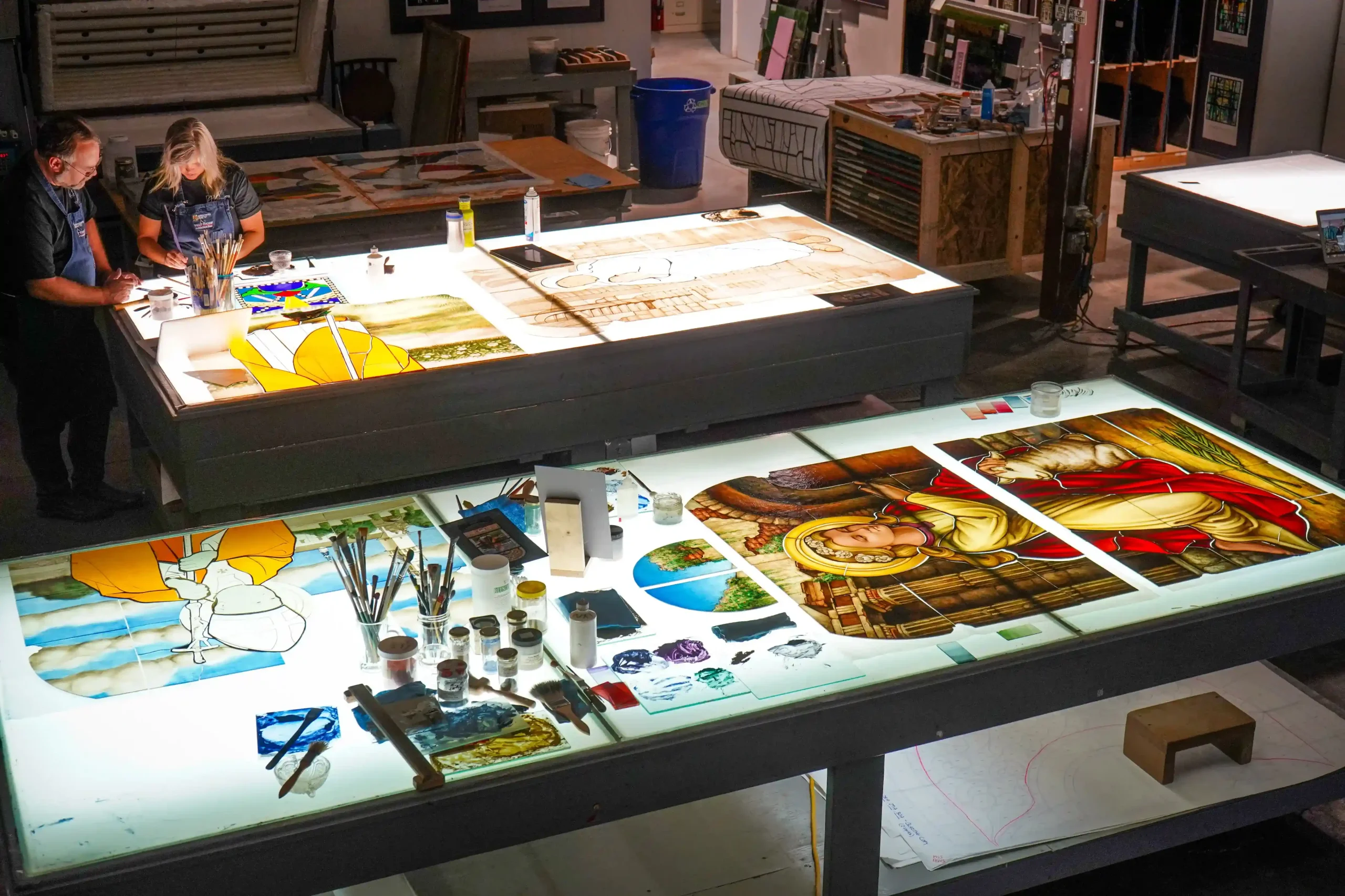
4
Understanding the Costs of Stained Glass Work
The cost of creating or restoring stained glass is influenced by a multitude of factors, each contributing to the overall scope and artistry of the project. It’s important to approach these costs not solely as expenditures but as an investment in the cultural and spiritual legacy of your church. Stained glass windows are complex works of art that combine intricate craftsmanship, historical authenticity, and architectural integration, making them invaluable additions to sacred spaces. The six key factors that affect costs are:
1. Size and Scale of the Project
The dimensions of the windows play a major role in determining the cost of a stained glass project. Larger windows require more materials, extended design hours, and substantial labor during the crafting or restoration process. Whether you are planning to restore an existing window or design an entirely new installation, the size will directly correlate with the level of effort and resources needed.
2. Design Complexity
The intricacy of the design is another significant consideration. Detailed artwork that involves intricate patterns, unique imagery, or the depiction of saints and biblical scenes requires a skilled artisan’s hours of painstaking work. Each element, from selecting color palettes to cutting and assembling the individual glass pieces, contributes to the complexity – and consequently the cost – of the final product. Simple geometric designs will typically cost less than elaborate narrative panels rich with symbolism and fine details.
3. Material Selection
The quality and type of materials also play a substantial role in pricing. Traditional cathedral glass, for instance, offers brilliant colors and textures, but its cost may be higher because of the manufacturing process. Hand-blown glass, favored for its unique beauty and historical accuracy, is generally more expensive than machine-produced alternatives. Additionally, specialty coatings such as UV protection or weatherproofing layers may add to the overall expense while enhancing the window’s durability and energy efficiency.
4. Restoration-Specific Considerations
For restoration projects, costs can vary based on the extent of damage and the techniques required for repair. Common tasks include stabilizing or replacing lead cames, mending cracked or missing glass pieces, and cleaning years – or even centuries – of grime buildup. Advanced restoration may involve color matching aged glass, replicating antique craftsmanship, or reinforcing the structural framework of older windows, all of which require expertise and specialized tools.
5. Labor and Expertise
Experienced stained glass artisans bring invaluable knowledge and skill, which are reflected in the cost of their services. The price of labor accounts for the precision needed during every phase of the project, from initial design drafting to installation. Reputable companies may also charge for consultations, site visits, or historical research to ensure fidelity to the church’s architectural and cultural heritage.
6. Customizations and Special Requests
Adding custom elements, such as culturally significant designs, theological symbols, or inscriptions, may require additional time and creativity. If your church’s project involves unique features or materials, prepare for an increase in costs to accommodate these personalized details.
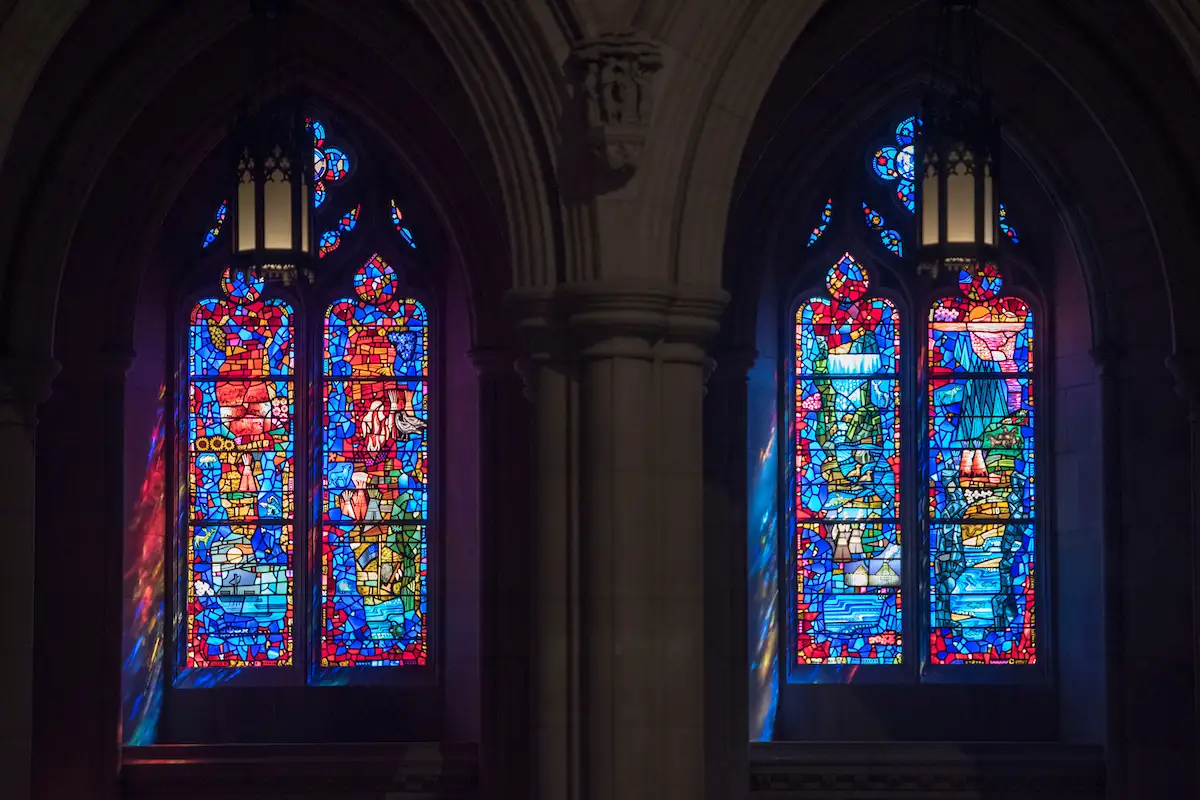
5
Balancing Investment with Long-Term Value
While the upfront costs of stained glass work may seem substantial, it’s essential to view them within the context of long-term value. Carefully crafted or restored stained glass windows are built to endure for centuries with appropriate maintenance. They not only enhance the aesthetic and spiritual ambiance of your space but also serve as enduring icons of faith, sparking inspiration and reflection within the community for generations.
Furthermore, stained glass windows often become historical treasures, with some pieces achieving timeless cultural significance that far outweighs their initial cost. Investing in this enduring beauty ensures your church preserves its heritage while remaining a beacon of inspiration.
Cost Transparency and the Importance of Estimates
To maintain accountability and avoid financial surprises, work closely with your selected cathedral glass company to request detailed estimates. The estimate should break down all key aspects of the project, including materials, labor, timelines, and any potential contingencies for unexpected challenges. A clear and thorough estimate allows you to budget effectively, helping the church community prepare for the financial commitment the project entails.
By understanding the costs involved and recognizing the significance of this investment, you can approach your stained glass project with confidence and clarity. This partnership between your church and skilled artisans is not merely transactional – it is an opportunity to honor your spiritual legacy by creating or preserving something timelessly profound.
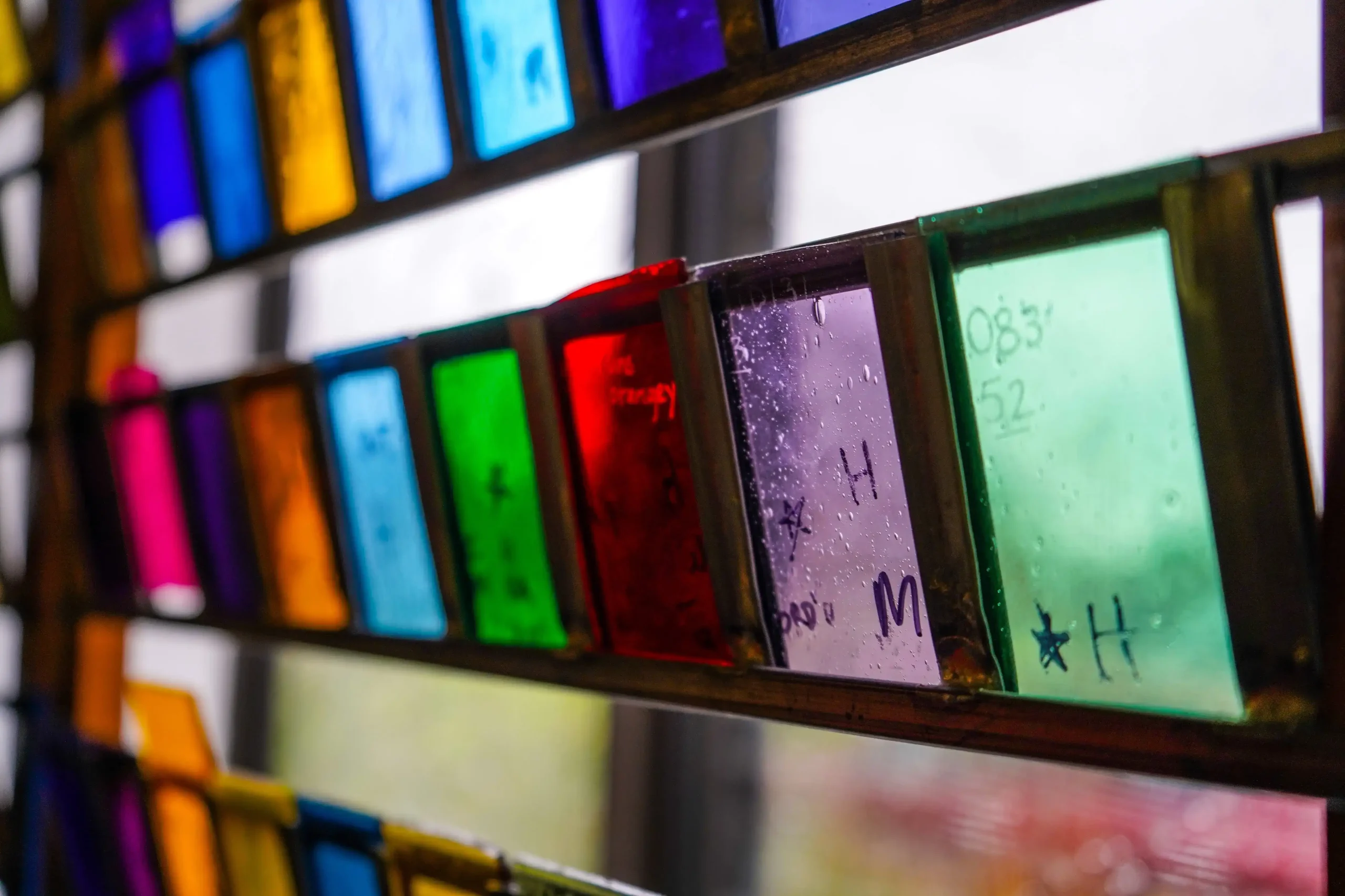
6
Willet Stained Glass Studios: Craftsmanship with a Legacy
Dating back to 1898, Willet Stained Glass Studios has earned its reputation as the leading cathedral glass company in North America. Our team of skilled artists and craftspeople brings a rare combination of artistry, technical expertise, and respect for tradition to every project.
Here’s why Willet Stained Glass Studios stands out:
- Masterful Restoration: From minor repairs to large-scale restorations, our team meticulously preserves historic elements while enhancing the vibrancy and integrity of your windows.
- Innovative Design: We specialize in custom, hand-crafted stained glass pieces tailored to complement your church’s architecture and spiritual values.
- Dedicated Collaboration: Our team works closely with church leaders, architects, and contractors to ensure their work aligns with the vision for the sacred space.
- Comprehensive Services: From initial free inspections and appraisals to ongoing care and maintenance, our services extend well beyond design and installation.
Clients continually praise Willet Stained Glass Studios for our professionalism, artistry, and heartfelt commitment to preserving the spiritual sanctity of each space they work in.
Crafting a Legacy with Thoughtful Choices
The stained glass windows of your church are not just artistic accents; they are a profound representation of your church’s mission, values, and history. Choosing the right partner for your stained glass project ensures this legacy is honored and preserved for generations to come.
By seeking a cathedral glass company that marries craftsmanship with a deep understanding of sacred spaces, you can make a wise, informed decision. Allow Willet Stained Glass Studios to bring your vision to life, creating or restoring windows that stand as enduring testaments of faith and beauty.
Schedule your free inspection and appraisal with Willet Stained Glass Studio today and transform your church’s windows into truly luminous works of art.
Interested in restoring or enhancing your church’s windows?
Contact Willet Stained Glass Studios today for a free inspection and consultation. Our team is here to help you protect and revitalize your stained glass while honoring its heritage and artistry.







